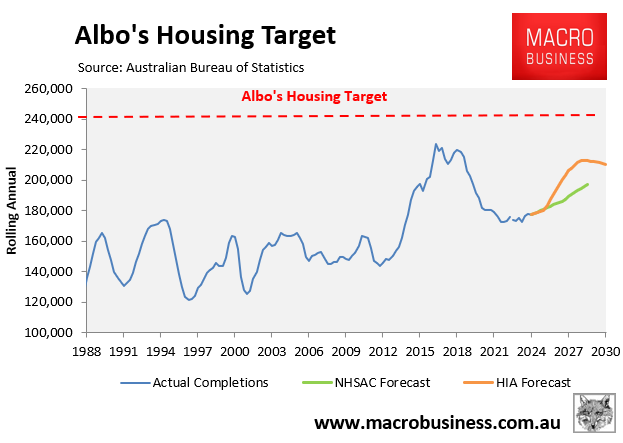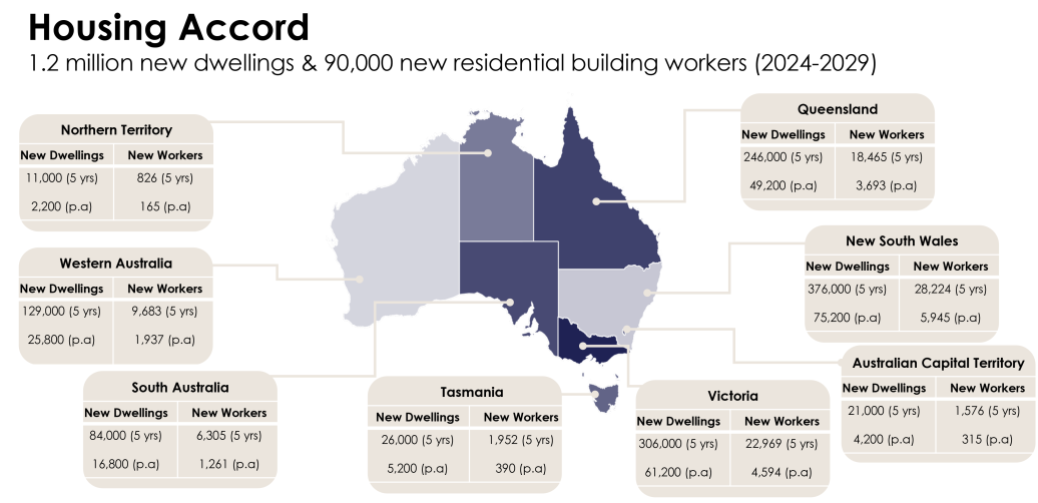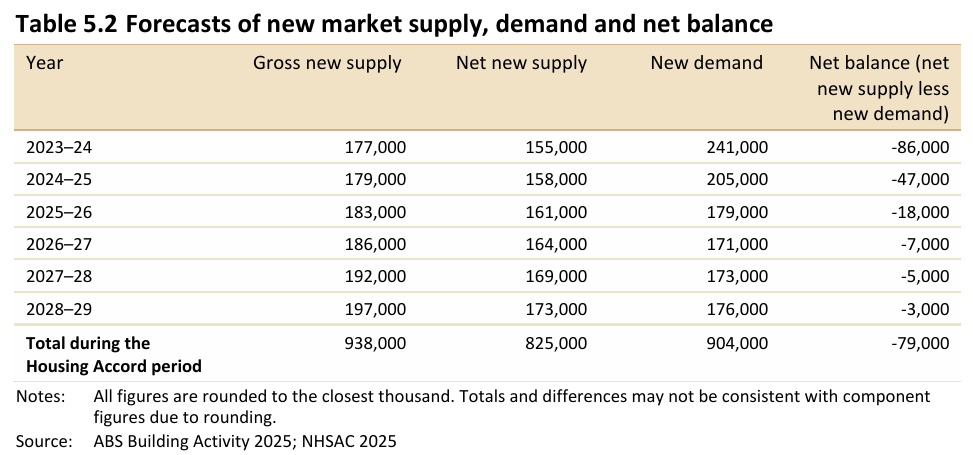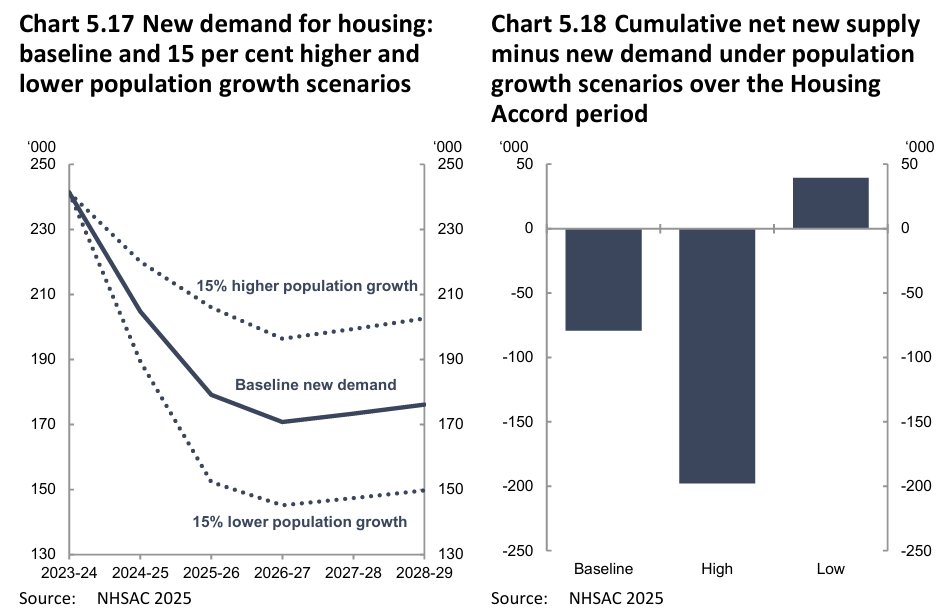The past month has exposed the fallacy of the Albanese government’s target to build 1.2 million homes over five years, which commenced on 1 July 2024.
The federal government’s own advisory body, the National Housing Supply and Affordability Council (NHSAC), forecast that only 938,000 dwellings will be built nationwide by mid-2029, 262,000 below the target.

The Housing Industry Association (HIA) also forecasts that Australia will badly miss the annual target of 240,000 homes per year.

Annual dwelling starts are forecast by the HIA to peak at almost 213,000 in 2028 and then fade over the following years.
Over the five-year Housing Accord timeframe, the HIA expects only 986,000 homes to commence construction, with only 945,000 likely to be completed.
The following chart compares the NHSAC and HIA dwelling forecasts against the Albanese government’s 240,000 annual housing target.

New analysis from property advisory firm Charter Keck Cramer warns that Australia would need 90,000 new residential building workers to deliver the government’s 1.2 million housing target.
The following graphic shows the number of new residential construction workers required by jurisdiction:

Source: Charter Keck Cramer
The impossibility of the 1.2 million housing target was spelled-out in black and white by Charter Keck Cramer:
Australian states and territories will need to deliver record levels of new dwellings over this 5-year period.
For context, at peak years of supply in FY 2017, there were around 220,000 new dwellings delivered in Australia. During this time both the greenfield and apartment markets were extremely active, and this was underpinned by foreign and local investors and lower tax settings.
Critically, we were also at a very different point in the housing market and economic cycle and did not have a costs of delivery crisis preventing the feasible delivery of new product…
It is our view that a 5-year window to rebalance the housing market, whilst well intentioned, is simply not realistic. Many changes at the planning level alone will take 1-2 market cycles (7-10 years minimum) to flow through once implemented.
This is also assuming that the housing market is not dislocated as it currently is, which means it will almost certainly take even longer to occur…
Recall that the NHSAC forecast that new housing supply will below population demand over the entire five-year National Housing Accord period. As a result, Australia’s housing shortage is projected to worsen by 79,000 dwellings:

NHSAC’s sensitivity analysis also showed that if the nation’s population grew by only 15% less than forecast over five years, then Australia’s projected shortage of 79,000 dwellings would turn into a surplus of around 40,000 homes:

Once again, the primary solution to Australia’s housing crisis is to reduce net overseas migration to a level below the nation’s capacity to build housing and infrastructure.
I will keep repeating this message until it is etched in the Australian public’s consciousness.

